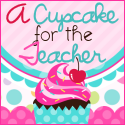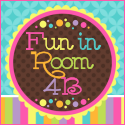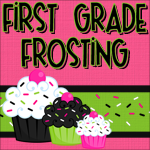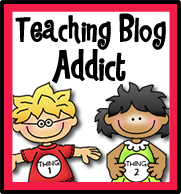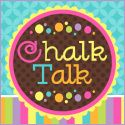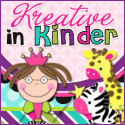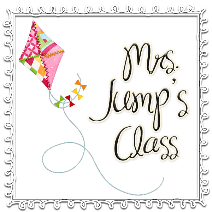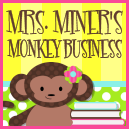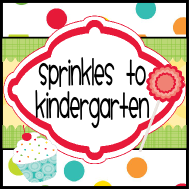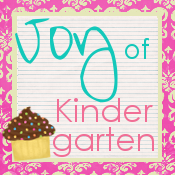Saturday, January 28, 2012
New Giveaways Page!
Wednesday, March 18, 2009
Economy + Teachers = ???
Tuesday, March 17, 2009
Technology in the classroom can be “FUN”TASTIC !
Uuuugggghhh! This may be the sound echoing from some classrooms as teachers are asked to implement more technology into their lessons. Thoughts of scheduling time in the computer lab or learning how to use one of those white boards rush through teachers’ minds. Though smartboard and computers are two types of technology being implemented into classrooms across the country, there are so many more additional tools that a teacher may not even consider as technology. Technology is everything from string to a tape recorder to a computer and everything in the middle.
How can technology truly be effective for learning in a manner where students are all over the place in today’s classrooms? The great aspect of this resource is it can be used as another avenue to reach a student. Our responsibility as teachers is to prepare our students for the “real world.” Technology is flooding our society and is growing around the world.
One of the many ways technology can enhance the learning within the classroom is exposing the students to blogging and other web tools. Teachers can utilize a blog for many purposes. Three types of blogs commonly used for primary education is (1) students maintain their own blog that is linked to the teacher’s blog or a central page, (2) Teacher has a blog and the students comment, and / or (3) Teacher and students share a blog. Students can meet other students across the globe using their blogs and other technology resources. An exciting project to attempt within your classroom is working with a program called SKYPE for students to contact other students. An example can be found on Kathy Cassidy – Blogmeister called “Mr Brown Can Moo, Can You?” posted on
http://primaryweb2.wikispaces.com/blogs
http://classblogmeister.com/blog.php?blogger_id=1337&l=1143592742
http://supportblogging.com/Links+to+School+Bloggers
Monday, March 16, 2009
Cookie Cutter Instruction No Longer

Many questions arise on the best way to approach instruction within the classrooms. Each student is different and learns differently. Our one-size fits all approach in the classroom never completely worked and the gap is widening as the years progress. Today, students may grasp knowledge through multiple avenues and should be presented with many learning options. In addition, the student having the opportunity to present his or her knowledge is just as important.
Carol Ann Tomlinson, an educator for more than 21 years and author of over 200 written works, states it best when asked what differentiated instruction truly means. Tomlinson says differentiated instruction is “a teacher really trying to address students’ particular readiness needs, their particular interests, and their preferred ways of learning. Differentiated instruction means addressing ways in which students vary as learners.” Until this point, I understood the instructional aspect of the term to represent the activities that occur within a classroom. However, it was only recently did I learn that differentiated instruction meant so much more. It included the lesson planning and and assessments of a classroom instruction as well. The complete cycle of learning is considered differentiated instruction.
Differentiation starts prior to the actual classroom instruction. Differentiation begins with a solid classroom practice—meaning everything we value is consistently represented within our rooms. According to Tomlinson, a well ran differentiated classroom has several key characteristics to include student-teacher connections, a well-rounded community, and strong, quality curriculum. For differentiation to work well within the classroom, all aspects are important and required.
Once the actual lesson begins, differentiation can vary. Instruction on the material taught to each student, the process of teaching that material, and the way students demonstrate their understanding of the material is considered pieces of differentiation learning. Each piece is important to the students’ learning process. Planning the approach is a significant part of lesson planning as well. Differentiation lessons do not just fall into place. Careful consideration of the students within the class can be truly beneficial in constructing appropriate instruction.
In addition, it is important to recognize the classroom is filled with diverse learners ready to soak up the information presented. A few students may have language barriers, some may have learning disabilities or may need additional assistance with one or more subjects, and some students may need to be further scholastically challenged. Regardless of the type of learner, it is important that the students and teacher embrace all learners and learning methods.
http://www.teachermagazine.org/tsb/articles/2008/09/10/01tomlinson.h02.html?print=1
http://www.newhorizons.org/strategies/differentiated/bravmann.htm
http://www.differentiationcentral.com/whatisdifferentiation.html
http://differentiatedinstructionclassroom.wordpress.com/2009/03/08/readiness-interests-and-learning-styles/
http://mrsgannon.wordpress.com/2009/02/07/my-understanding-of-differentiation/
http://www.teach-nology.com/tutorials/teaching/differentiate/planning/
Saturday, March 14, 2009
"MI" - What in the World is IT?
The first time I heard the term “Multiple Intelligence” was a few years ago. I was watching a PBS special on an elementary teacher who geared his lessons to meet the needs of all of his students. The teacher was utilizing a theory called multiple intelligence in his lesson plans. Each of the intelligences was successfully applied to every lesson and all of his students were thriving in his class. His belief was for every student to learn, every student must be taught in the way he or she grasped knowledge. The concept was genius and I wondered why every teacher was not leveraging the theory and implementing this information into his or her classrooms.
The PBS special spiked my interest and I began to research the background of Multiple Intelligence Theory. What were the details of this theory and how could it benefit the classroom? Simply stated, the Multiple Intelligence Theory is about how an individual prefers to learn. Howard Gardner created the multiple intelligence model initially for a psychological purpose; however, the theory quickly caught speed in the education field by teachers and administrators. Originally,
Each of the intelligences is directed towards a style of learning. A child who learns through reading may favor learning through the Linguistic Intelligence to grasp information. Another child may retain information through pictures and would lean more towards the Spatial Intelligence. Applying a rap song to a mathematical concept might aid in learning for individuals who lean towards the Musical intelligence theory. The theory of multiple intelligence claims that human beings possess at least seven types of mental functioning or intelligence, therefore, every individual has the ability to use every learning style. However, every individual has one or two styles that work best for him or her when learning.
Why are we not using this approach more in the classrooms? A teacher is responsible for providing information to his or her student in the best manner for that student.
My theory is the teachers who are reaching all of their students needs are utilizing the multiple intelligence theory in the classrooms. Teachers can begin using this tool in their classrooms one-lesson plan at a time. This approach towards implementation will allow a teacher to become gradually comfortable with the tool while not being overwhelmed. A word of advice – try it! What is the worst that can happen?
For More Information...
http://jeffcoweb.jeffco.k12.co.us/high/wotc/confli3.htm


